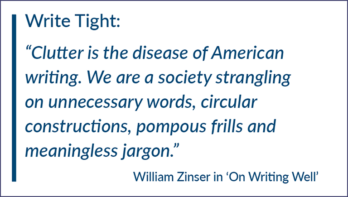What would Jesus do as a journalist?
A number of specialty newspapers such as the Christian Citizen USA, with headquarters in Dayton, try to answer that question every issue. As members of the Christian Newspaper Association, with more than 30 newspapers nationwide, these publications are advocates of faith-based solutions as part of their civic journalism emphasis. Their readers know that these journalists are advocates, but what happens with the editor uses a general-circulation newspaper to promote the gospel?
That’s what happened just over a century ago when a Congregationalist clergyman took over a mainstream newspaper and published it for one week using the question, “What would Jesus do?”
Topeka Daily Capital in March 1900 in Kansas, the answer to the WWJD question was to publish sermon-heavy, news-light copy, an approach that left his readers clamoring to the competition for the day’s record of news.
For the Rev. Dr. Charles Sheldon, the clergyman-turned-editor for the
Sheldon would have benefited from a tip from writer Al Janssen.
Janssen travels the globe talking to writers about the power of the narrative. He knows that the best way to reach a culture is to share a gripping story that includes a timeless message that hope follows tragedy.
That’s the lesson that Sheldon knew deep within himself; after all, he published a number of successful novels including In His Steps: What Would Jesus Do? a fictional account about of a newspaper editor who used the WWJD question as an antidote to all the woes of journalism.
When Sheldon took over as a real-life editor of the Topeka Daily Capital, he emulated his fictional editor and bypassed the story-telling power of a good story and produced second-rate news.
Of all the Christians from all the ages, Sheldon, an international personality well before the cult of celebrity was coined, was uniquely positioned to bring about press reform. His novel, In His Steps, was circulated by more than 20 different publishers, making Sheldon, a shy man, known by here and abroad. Instead of using his fame to tell dramatic stories to illustrate his point, he resorted to generalizations that left his readers yawning. Instead of using public records to identify delinquent tax payers, he suggested that his readers were guilty of fraud. Rather than report the results of a prize fight, he published the score of a bowling tournament.
Advertising also received the WWJD treatment and patent medicine notices were pulled; however, one display ad missed Sheldon’s critical eye. The maker of plows promised readers that its product was so superior, Jesus himself would have used it!
Nonetheless, Sheldon’s story possesses its own narrative power. Like a David of old, Sheldon took on the Goliath press and slung pebble after pebble its way, but without David’s miraculous results. So, what can be learned from an editor who loved to write fiction after the parables of Christ, only to neglect this time-tested technique when he put out a daily newspaper for a week?
Plenty.
First, Sheldon put argument over art. Instead of winning his readers over with a story, he gave them sermons. A well-told news story draws readers in. As writer Janssen told a group of wordsmiths, trivial stories told well will get a hearing; profound stories told poorly won’t.
While Sheldon’s poor story telling lost him the call to arms for his Social Gospel, the clergyman-turned-editor made his mark. He did not do it by being excellent as a journalist; he did it by forcing editors and publishers to consider the reader in fresh ways with reader services such as his appeal for famine relief for a starving continent. He provoked hundreds of readers to donate to a worthy cause and saw an outpouring of assistance to East Indians devastated by hunger. Sheldon used his news pages to avert human suffering.
Nonetheless, his newspaper missed the opportunity of the age by not rallying for a call to art.
He made advertisers establish policies and drop the convention of publishing nearly any paid announcement that appeared over the transom. But more than anything else, Sheldon did his best to ask that perennial question, “What would Jesus do?”
In many ways Sheldon never answered the question with any satisfaction but he made journalists and their audiences wonder about the issue. Furthermore, Sheldon did much to make the press more accountable to readers in a day when screaming headlines ruled the press and the unsung heroes behind the scenes received scant attention in that modest modern enterprise, the production of a daily newspaper.
Sheldon failed by not thinking through WWJD as a journalist. For the answer is obvious. Jesus, the master story-teller, used parables to teach. Jesus once wrote in the sand, an impermanent mark if one ever existed, but his stories remain today. For journalists of the 21st century, whether working in the mainstream press or the advocacy press, the lesson of WWJD as a journalist is clear. Tell a good story with passion and conviction and all the world will respond.
— by Michael R. Smith
Dr. Michael R. Smith is the author of The Jesus Newspaper (University Press of America).





